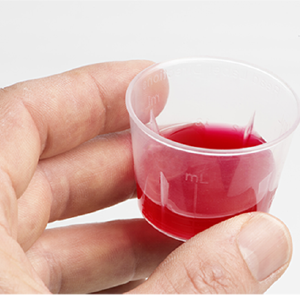How Can We Actually Reduce Overdose Deaths?
In the last couple of decades, the increasing number of drug overdose deaths has captured the attention of the media, medical professionals and government officials. And rightfully so. Every death is a tragic loss to the individual’s family. And the massive numbers of deaths constitute a national loss and heavy financial burden to both citizens and businesses.
If the right solution could be found, it would provide relief from the loss and help those who are addicted get back on the road to lasting sobriety. However, it seems that one change after another are tried but the overdoses keep increasing. Here’s some of the changes that have happened in the last couple of decades.
- In 2000, medical doctors could get permission to treat up to 30 opioid-addicted patients with buprenorphine. This is a synthetic opioid that prevents a person from suffering from withdrawal symptoms when they go off heroin or stop abusing painkillers. It is itself addictive and a drug of abuse.
- In 2006, the limits were changed so doctors who had already been treating 30 patients for a while could get approval to treat up to 100 opioid-addicted patients with buprenorphine.
- In 2010, OxyContin was reformulated to make it hard to abuse. The intention was to discourage people from abusing this popular painkiller by crushing it and snorting it, or dissolving it and injecting it. The new pills could not be crushed or dissolved easily.
- Also in 2010, most Florida pill mills were shut down, cutting off the opioid pipeline to states like West Virginia, Kentucky, Tennessee, Ohio and many others.
- In 2012, opiate prescribing topped out. After this, there began to be a slight decline in the number of prescriptions handed out.
- Now, there’s action being taken by the U.S. Department of Health and Human Services to increase the number of people being treated with buprenorphine to 200 per approved medical practitioner. According to the Substance Abuse and Mental Health Services Administration, there are nearly 20,000 practitioners in the U.S. who are already approved to offer buprenorphine to either 30 or 100 patients.
The Result of these Changes
Of course, there were more efforts than just these. But the listed changes had national effects. One would think that if these actions accurately targeted significant and correct sources of the problem of overdose losses, then we would see fewer overdoses.
In fact, we are seeing more. This graph shows that through 2014, heroin overdose deaths continued to increase.

This seems confusing. We had made it harder to abuse the most popular painkiller – OxyContin. We increased the availability of medication-assisted treatment by licensing 20,000 practitioners to dispense buprenorphine. We cut off the country’s biggest pipeline of illicitly-obtained painkillers – the drugs that started so many people on their way to an addicted lifestyle.
Why didn’t these changes result in fewer overdose deaths?
Because none of them handled the addiction of each addicted person. The cravings, the underlying issues – they all remained intact. So if the person’s supply of methadone or buprenorphine was interrupted or his life presented challenges that were too big or too sudden, he would be likely to relapse.
And sadly, it’s when a person has spent some time not using drugs that he is the most likely to suffer a fatal overdose. Perhaps he’s been in jail or in rehab. If he gets out and still suffers from the same cravings he had before rehab, his first stop might be his drug dealer’s place. And that jolt of heroin is far too strong for a person who has lost the tolerance he previously built up to that drug. Now it overwhelms his body and his breathing stops.
Recovery Happens One Person at a Time
The only way to actually handle the drug problem is through true rehabilitation of each addicted individual. To remain sober, a person must be returned to the healthy condition he was in before he began using drugs or drinking. He needs to learn how to face his life without flinching. He needs the analytical life skills to know how to resolve problems that he might have once run away from.
He also needs to repair the damage he suffered while using drugs. That means finding real, heartfelt relief from his guilt, recovering his self-respect and coming out of any hazy mental state left over from years or even decades of using drugs. And it also means relief from the incessant cravings that plague so many people who want to live sober lives after addiction.
For fifty years, the Narconon drug rehabilitation program has enabled the addicted to find stability and sobriety, even after addiction to a drug like heroin. Step by step, a person going through the Narconon program builds the ability to enjoy a productive, sober life. Restored self-respect, clearing up hazy, slow thinking, reducing cravings to manageable levels and teaching new sober living skills – these improvements are all part of the Narconon drug rehabilitation program. Call Narconon Arrowhead today to learn the details of this alternative to conventional drug rehabs. And find out how someone you care about can quickly be on their way to a sober, enjoyable life.
http://www.naabt.org/laws.cfm
http://www.cbsnews.com/news/painkillers-peak-decline-in-opioid-prescriptions/
http://www.hhs.gov/about/news/2016/03/29/hhs-takes-steps-increase-access-opioid-use-disorder-treatment-medication-buprenorphine.html
http://buprenorphine.samhsa.gov/pls/bwns_locator/!provider_search.process_query?alternative=CHOICED


